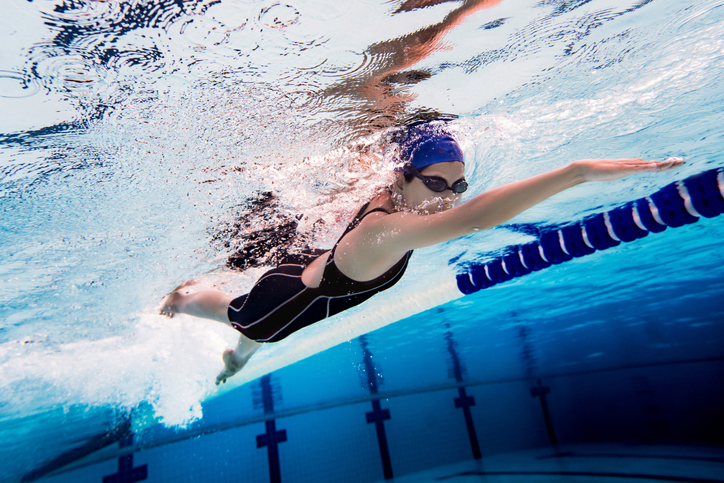Yes, even triathletes need to work on their turns. Here’s why.
I know there are no walls in the lake...But you should still care about your turns
 Photo by:
Getty Images
Photo by:
Getty Images
I don’t blame you if you’re a sloppy turner in the pool. I see hundreds of sloppy turns and push-offs every week; splashing, un-streamlined, inefficient, sloppy turns. Despite running specific clinics on how to turn and streamline for our club, I keep seeing it. But you know what? I get it. Training for triathlon is a complicated endeavor. You aren’t just learning the skills, “language” and training approach for one sport, you are learning it for three at the same time. With so much to learn, proper turns in the pool can seem like a low priority. After all, most triathlons are swum in the open water where there aren’t even walls, so why bother learning how to push off of them properly? Spending the time learning better swim technique will give you a bigger pay off, right? I’m here to say that you can’t have one without the other. You MUST spend time focussing on your turns and walls if you want your swimming to keep developing.
But what does pushing off a wall have to do with how you swim? Well, two of the main elements of good swim technique are balance and alignment. Pushing off inefficiently from the wall results in a body that is neither of these. If you start each length with your head too high, your hips too low and your body not in a straight line, the best-case scenario is that you are going to spend the first 5 m of each length with poor alignment and an unbalanced body. That’s 20% of each length! If you do this every time you leave the wall, it means that you are spending 20% of your entire workout not improving on key technical elements, but reinforcing incorrect technique. Not only that, but you’re going to have to work really hard to re-establish good alignment and balance for the rest of the length.

The irony of this is that pushing off of the wall is actually the best and easiest time to work on your balance and alignment because nothing else is going on – you aren’t breathing or using your arms. If you pay attention to these elements as you leave the wall, instead of spending 20% of each length reinforcing bad technique, you can use that time to focus on developing good technique. It will also make the rest of your length easier as you will carry over some of that good alignment and balance for the rest of the length, even if you struggle with other elements of your swim.
Get more out of your swim workouts with these simple swim etiquette tips
Another reason to work on proper turns is because it keeps you moving at a steady speed. An inefficient turn is almost like a break; you slow down as you approach the wall, stop and snatch a breath (or two) as you turn your body around, and then turn and push off again and go back to swimming. This process can easily take two to three seconds. This might not sound like a lot, but there are three turns in a 100 m interval and if it takes you two minutes to swim that 100 m, then you are spending almost 10 seconds turning. This is almost 8% of the total swim time. This means that you are spending 8% of your swim time “resting,” or at least not working on the same fitness elements as when you are swimming. The equivalent, when cycling, would be to get off your bike and do five push-ups every kilometre. Sure, you’re getting in some extra strength training, but is that what you are really looking for when going for a ride? No, you want to get in the flow and develop that cycling endurance. Same thing with swimming; faster turns make it easier to get and stay in the flow.
Although there are no walls in the lake, you shouldn’t neglect your turns. Each wall is a great opportunity to work on technique, and improving your ability to complete turns efficiently will help you get more of the fitness you want out of your time in the pool. So, tuck that chin, streamline nice and tight, and push off into a great swim session.
Darian Silk is a triathlon coach and Clinical Exercise Physiologist based in Toronto. Read more about Darian here or email him at darian@teamatomica.com. You can also check out his TrainingPeaks profile here.
